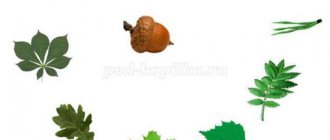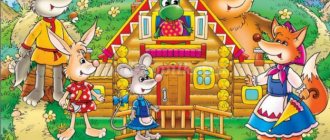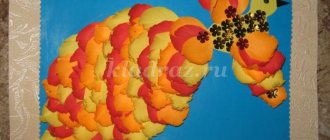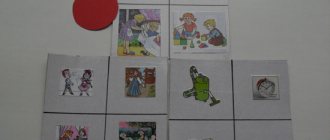Card index of traffic rules games in the junior groupcard index (junior group)
Card index of games by
Rules
Road
Movements
Didactic games.
“Guess what sign?”
Objectives: To teach children to distinguish road signs, to consolidate children’s knowledge of the rules of the road; develop the ability to independently use the acquired knowledge in everyday life.
Material: Cubes with road signs pasted on them: warning, prohibition, directional and service signs.
Progress of the game:
1st option. The presenter invites you one by one to the table where the cubes lie. The child takes the cube, names the sign and approaches the children who already have the signs of this group.
2nd option. The presenter shows a sign. Children find this sign on their blocks, show it and tell what it means.
"Drivers"
Goals: Teach children traffic rules; develop thinking and spatial orientation.
Material: Several playing fields, car, toys.
Progress of the game:
Several options for simple playing fields are prepared in advance. Each field is a drawing of an extensive road system with road signs. This will make it possible to change the road situation. For example: “You are a car driver, you need to take the bunny to the hospital, get gas and fix the car. The picture of the car represents the garage where you left and where you should return. Think and say in what order you need to visit all these points so as not to violate traffic rules. And then the two of us will see if you have chosen the right path.”
"Travel by Car"
Goal: To consolidate with children knowledge of road signs and rules of conduct on the streets.
Material: Game field, chips.
Progress of the game:
The children begin to play on the playing field. When passing road signs, they stop and talk about each of them. The one who reaches the sea first wins.
"On the way to"
Objectives: To consolidate knowledge about various types of transport; train attention and memory.
Material: Pictures of cargo, passenger transport, chips.
Progress of the game:
Before the trip, agree with the children who will collect what type of transport (for clarity, you can distribute pictures of trucks and cars, you can also take specialized transport: police, firefighters, ambulance, etc.). On the way, children pay attention to the cars, name them and receive chips for it. Whoever collects the most wins.
"Find the right sign"
Goal: Continue to consolidate knowledge of road signs and traffic control devices.
Material: 20 cardboard cards (puzzles). Some halves of the cards depict road signs, the other halves show the corresponding traffic situations.
Progress of the game:
Children divide all halves of cards with signs equally. The traffic elements are shuffled and placed face down in the center of the table. Children take turns taking cards and matching them to their own. The first person to find matching halves for all of their cards wins.
"Learning road signs"
Goal: Continue to consolidate children's knowledge about road signs and traffic lights.
Material: Cards large and small with signs.
Progress of the game:
Children are dealt large cards. The presenter takes turns showing cards with road signs, the one to whom it suits takes the sign, puts it in the upper right corner and tells what the sign is called and in what situations it is used. The winner will be the one who correctly selects the signs for the situations and can explain it.
"Traffic Laws"
Objectives: To consolidate the basics of road literacy; introduce the main road signs, their classification, purpose; promote the development of attention, memory, thinking.
Progress of the game:
The teacher takes on the role of a traffic police inspector. Participants move around the playing field using a cube. If the color is green - movement is allowed, yellow - attention, red - stop - the player misses a move. If the chip lands on a field with a picture of a road sign, the participant needs to find a sign from this group in the “common bank”. The one who scores the most points wins. 1 card – one point.
"True False"
Goal: To reinforce with children the rules of safe behavior on the streets and traffic signs.
Material: Playing field, traffic signs.
Progress of the game:
Children distribute the characters in the picture, and each one talks about who is doing what - right or wrong. The winner is the one who more fully and correctly describes the behavior of the selected character.
"We are passengers"
Objectives: To clarify children’s knowledge that we are all passengers; establish the rules for boarding and disembarking from transport.
Material: Pictures of traffic situations.
Progress of the game:
Children take one picture at a time and tell what is drawn on them, explaining what to do in a given situation.
"Road ABC"
Goal: To consolidate knowledge of road signs, the ability to correctly navigate them, classify them by type: prohibitory, prescriptive, warning, informational.
Material: Cards with traffic situations, road signs.
Progress of the game:
Children choose cards for themselves, the leader gives road signs, he shows the signs one by one, the one who has the right card takes the sign and justifies his choice.
“Know and follow traffic rules”
Goal: To reinforce traffic rules with children; repeat the traffic light values.
Material: Illustrations of city streets.
Progress of the game:
Children are given a riddle about a traffic light, a discussion is held about the meaning of the colors of the traffic light, an analysis of situations on the road and the correct behavior of the characters.
"Behavior rules"
Goals: To reinforce the rules of behavior with children; discuss various dangerous situations that may arise when playing in the courtyard or on the street; teach necessary precautions.
Material: Cut pictures.
Progress of the game:
On the board are pictures depicting people in various situations. The teacher invites the children to look at them. Children look at these pictures, choose any one and tell them, remembering the rules of the road, what not to do and how to act.
"Pedestrians and transport"
Goal: To reinforce with children the rules of the road and the rules of safe behavior on the streets.
Material: Dice, playing field, chips.
Progress of the game:
The playing field depicts a road along which the players move with the help of chips; they have obstacles in the form of signs on their way.
When hitting these obstacles, the player returns back. Once at the “pedestrian crossing”, the player moves forward along the red arrow. The one who reaches the finish line first wins.
"Big Walk"
Goal: To familiarize children with the road signs necessary for a motorist.
Material: Game field, chips, road signs.
Progress of the game:
Children in token cars drive through the city streets, observing traffic rules, collecting photographs of friends and returning to their home. Whoever returns first, breaking the fewest rules, wins.
"Follow the traffic rules"
Goals: To teach children to navigate by road signs, to follow traffic rules, to develop the ability to be polite and attentive to each other.
Material: Playing canvas, road signs, cars, figures of people.
Progress of the game:
Children choose their own cars and figures of people, guided by the situation drawn, and guide their characters around the playing field.
"Talking Road Signs"
Goal: To teach children to navigate by road signs, follow traffic rules, and be attentive to each other.
Material: Each playing field is a drawing of an extensive road system with road signs. Cars, game characters.
Progress of the game:
In front of each child is a field, each task: after driving across the field, following all the rules, without missing a single sign, get to the named point.
"Cut marks"
Objectives: Develop the ability to distinguish road signs; fix the name of road signs; develop logical thinking and eye in children.
Material: Split signs; samples of signs.
Progress of the game:
The child is first asked to remember which traffic signs he knows, and then he is asked to assemble cut signs using a model. If the child copes easily, then he is asked to collect the signs from memory.
“I am a competent pedestrian”
Goals: To teach children to analyze situations on the road; strengthen children's skills of safe behavior on city streets; develop thinking, attention, observation.
Material: Two sets of cards with situations, road signs.
Progress of the game:
The child is asked to first consider dangerous situations that may happen on the road; If the child answers correctly, then he is asked to independently find the right sign in accordance with the situation on the card.
"Road Lotto"
Goal: To consolidate children's knowledge of traffic rules; learn to find the right road signs depending on the situation on the road; develop logical thinking, memory, attention, observation.
Material: Cards with situations on the road, road signs.
Progress of the game:
Each child is given a card that depicts a traffic situation, and children are asked to find the right sign that corresponds to the situation on the road.
Board and printed game “The Road to Grandma”
Goals: To develop attention, memory, observation in preschool children; contribute to increasing the level of road literacy.
Material: A field depicting the path to grandma with various road signs; chips; cube.
Progress of the game:
Two or three children are asked to race to get to their grandmother’s house, while observing traffic rules.
Outdoor games according to traffic rules
"Cars"
Children imagine themselves as cars and move according to the teacher’s signals.
The words “slow”, “right”, “left”, “forward”, “back” are pronounced.
Children “Cars” move along the “roadway” of the group according to
task.
"Traffic lights"
The teacher invites the children to turn into traffic lights and play. Each child receives a circle of one of two colors. Children move in circles to cheerful music. As soon as the melody fades, two of them gather in the “traffic lights”. The game is repeated several times.
"Listen to the command"
Children move according to the teacher’s commands: the steering wheel turns;
The car window goes up and down; wiper blades move left and right, etc.
"Colored Cars"
The guys receive circles of different colors and “turn” into colored ones
cars. The group organizes the “roadway” and “cars”
move along it, observing all traffic rules known to them.
"Sparrows and the car"
Children - “sparrows” sit in nests (on chairs). The teacher or one of the children is a “car”. When the site is quiet, there is no car, all the sparrows scatter around the site. At the teacher’s word “car” or an unexpected signal from the car, all the sparrows return to their places. The teacher selects the birds that flew to the nests first. To give the children a little rest, the teacher, pretending to be a car, drives twice from end to end along the playground and stands on the side. The children run out to the middle of the playground again and the game repeats.
"Traffic Signals"
The teacher shows the traffic lights, the children perform the following actions: red - stop, yellow - get ready, green - walk, jump, run.
“We won’t tell you where we were, what we were driving, we’ll show you”
(low mobility)
The child depicts some type of transport, the rest guess.
Role-playing game “We are passengers.”
A bus driver and conductor are selected. The rest are becoming
passengers. The group chooses a “stopping” place, from chairs
a “bus” is being compiled. Rules for boarding the bus are being practiced;
behavior while driving; getting off the bus.





